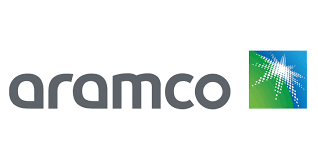Advanced Electrical Power Systems Course
Introduction:
The latest and modern practices in electrical power systems promote efficient generation, transmission, and distribution of electricity while minimizing carbon emissions for a better tomorrow. This Advanced Electrical Power Systems course covers the green generation of electricity using renewable sources of energy.
The seminar is designed to present the advantages of Smart and Micro Grids. It aims at managing fault levels, active and reactive power, voltage, and frequency, which are vital to today’s electric power systems. Furthermore, today’s modern power systems have also included new techniques to mitigate power quality problems.
Participants will familiarize themselves with the principles of maintaining the stability of the power system with the help of the Flexible AC Transmission System (FACTS), designed for low voltage and high power. These systems deliver network regional passive reactive inductive or capacitive power as needed, improving the quality and efficiency of the power transmission system.
Objectives:
At the end of this Advanced Electrical Power Systems course, the students will be able to:
- Express knowledge towards alternate forms of generation and embedded generation.
- Improve power flow for considerable power using FACTS devices, including enhancing system operation with respect to the DSM approach.
- Acquire knowledge of recent CT and VT optical transducers and protection systems with the use of microprocessor relays.
- Tackle non-linear loads and inject harmonics at the PCC.
- Conduct plant monitoring operations, especially of GIS substations.
- Investigate high-speed fault limiters and thermal monitoring systems for cables.
Training Methodology:
- Interactive lectures
- Case studies
- Group discussions
- Hands-on practical exercises
- Simulations
- Assessments and quizzes
Course Outline:
Unit 1: Introduction to Modern Electric Power Systems
- Structure and chronology of power generation and delivery systems: Generation, Transmission and Distribution, and the SMART Grid.
- Real Schedule - P Flow and Flow of Reactive Power - Q.
- System and Transformer Fault Level Characteristics and their Consequences.
- Reactive Power burdening control and voltage control.
- Active power control and system frequency.
- Voltage profile of Reactive Compensation and its effectiveness.
- Introduction to most power system disturbances.
Unit 2: Current Operational Problems and System Operations
- Addressing the increasing energy demand, carbon footprint, and climate change impacts.
- Symmetrical and Asymmetrical Faults and their effect on positive, negative, and zero sequence components.
- Plant Condition – monitoring of temperature.
- Power System and Substation Automation.
- Stable Operation of Overloaded Systems: Growing Problems Within the System – Voltage Dip.
- Transmission Voltage Levels – Line and Cable Design, Power Loading, and Temperature De-rating.
- Identify the significant causes of power system operational failures.
Unit 3: New Developments in the Analysis of Electrical Power System and Renewable Energy Sources
- Vacuum Energy: Photovoltaics Energy, Geo-Masses Energy, Aeolian Energies, and Non-Polluting Storage Devices for the Environment.
- Renewable Energy Generation: Yes, but on a tragedy of the commons scale, which poses stability challenges?
- Demand Side Management: Remote Control Load – Reduction of Demand – Optimization of Transmission – Management of Dips and Swells.
- Optical Current Transducers for Protective Relaying: Optical Sensors of Current without limiting Magnet Transducers by C.T. Atmosphere.
- Devices for High Voltage Work: Surge Arrester, Current Limiting Device, Network Connectors.
- Non-linear Loads: River Harmonization of PCC – Filtering G5/4 compliances.
- Triplen Harmonics and Its Mitigation Measures.
Unit 4: Digital Substation, FACTS, and HVDC Inter-Link
- Modelling of Digital Substation.
- Flexibility Alternating Current System (FACTS): Static VAr Switching – Controlled Series Capacitors.
- Evolution in Maintenance Patterns, Plant Surveillance from a Distance, and Development of Manless Substations.
- Data Collection.
- High Voltage – Direct Current links as compensation for dynamic disturbances.
- Monitoring of temperature for optical cables.
- SCADA and Artificial Intelligence Systems for Fault Diagnostics.
Unit 5: Effective Ways of Numerical Protection Relays and State-of-the-Art Fault Current Limiter Advanced Protection and Control Techniques
- Advanced Protection and Control Techniques.
- Numerical Relay and Protection Functions.
- Electrical insulation of air and SF6: the problems.
- Condition monitoring of plant.
- Fault current limiter: How to apply.
- GIS Diagnostics: Partial Discharge Techniques.


















